If you don’t have the power or equipment needed to make coffee the typical way, you can still get your fix using more primitive methods. Coffee may be superfluous, but some of the techniques and gear used are relevant for other forms of survival cooking, too.
Summary:
- Although there are lots of fancy methods, the core principle is always the same: mix coffee beans with water so that the water absorbs some of the coffee bean goodness (similar to tea).
- Cold brewing is simply mixing coarse-ground coffee beans in cold/mild water and letting it sit for 12+ hours, then optionally straining out the coffee particulates.
- Cowboy coffee uses boiling water instead, which makes the process of infusing the water with coffee goodness go faster.
- French presses can be a simple and resilient way to produce a smooth cup.
- If you like to grind your beans, think about how you can power your grinder at home during a power outage. A semi-portable solar panel and battery station would do the trick.
- Instant coffee packets are a common item in people’s home supplies (great for the FIFO method), car kits, and go-bags, that way they can always get a fix (or barter it!)
- Avoid coffee-making gear made of glass or other fragile materials.
Beans don’t have to be roasted or ground
Coffee beans in their natural state are greener and harder than the beans you typically see in the store. Most beans are roasted before you buy them, which enhances the flavor and makes the beans easier to grind.
If you happen upon ‘green’ coffee beans, know that you can use them for cold or cowboy brewing, but it will take longer than normal since the bean is harder, and you won’t get the same rich flavor you get from roasted beans.
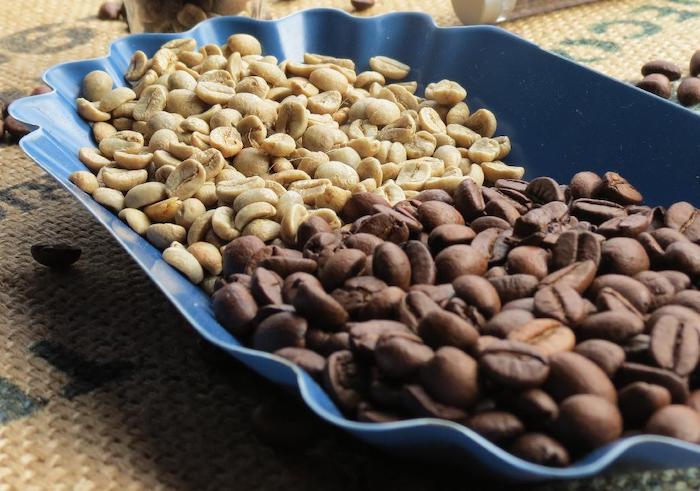
Although it’s preferable to grind coffee beans, which increases the surface area in contact with the water and thus makes steeping work better, you can use whole beans in a worst-case scenario. Or even crush the beans with something like the flat part of your field knife.
If you typically grind your own beans, you may want to consider ways to power your grinder during short power outages, like a battery bank. However, during longer outages (such as winter storms), that may prove to be a poor use of limited power.
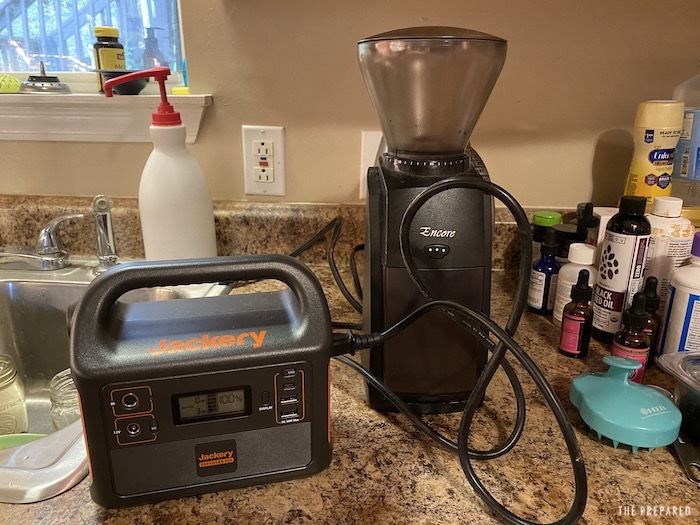
My philosophy with tools is to have a manual equivalent for whatever power tool you have. So it’s a good idea to have a manual coffee grinder as well. I’ve heard good things about the Timemore Chestnut C2 and it’s small enough that you can tuck it away when you don’t need it.
Failing that, it’s good to have some coffee that doesn’t need special tools. You might consider keeping a canister of ground coffee just in case, but what I like to do is keep around some packets of instant coffee, which are easy to prepare. Most instant coffee is terrible, and the really good ones are expensive (and still not as good as fresh ground coffee). I’ve settled on Mount Hagen organic instant coffee, which is perfectly drinkable and not overly expensive.
While coffee is a luxury item in a go-bag, I like to keep a few packs in my cook kit. They add almost no weight and they double as padding to fill up empty space. With my pocket stove and a packet of instant coffee, I can have coffee anywhere in short order.
Cold brew
If you don’t have a heat source, you can still make coffee:
- Grind beans into a coarse mix, or you can also use whole beans instead.
- A good rule of thumb is one part coffee bean/ground for two parts water (eg. 1.5 cups of grounds with 3 cups of water).
- Mix the coffee beans/grounds with water. Use filtered water if you can.
- Let it steep for at least 12 hours for grinds, 24 hours for whole beans.
- You can then drink as is, but ideally you block or strain out the coffee particulates instead of drinking them.
Some people like cold brewing because the process leaves behind some of the bitter and sour compounds in the bean, making the infused water smoother and sweeter than a typical coffee.
Cowboy coffee
Boiled or “cowboy” coffee has you steep grounds directly in boiling water without any filtration.
- A finer grind is preferred because, if done right, you won’t have any particulates left behind to strain out and the flavor is smoother. So grind up the beans ahead of time.
- Get a fire going and place a pot of (ideally filtered) water over top. A coffee boiler with a spout is ideal, but you can use anything.
- Coffee:water ratio is roughly 1:16, such as ¼ cup coffee grounds per 1 quart water.
- Once the water is warm, add coffee to the pot.
- Let it get to a roiling boil and keep it there for 2-4 minutes. Longer boil = stronger brew. You can reduce the heat if needed to keep it from boiling over.
- Take off heat, let it sit for 1-2 minutes.
- Pour a small amount (maybe 1 cup) of cool/mild water down the pour spout (if there is one), or around the top of a standard pot. This cool water helps any leftover particulates settle to the bottom and washes away any grounds that might have gotten stuck up near the spout/top.
- Drink. If done right, there’s nothing to strain.
Here’s Cowboy Kent showing his style:
Some people like cowboy coffee because the process naturally ends up with less acid in the mix compared to typical methods, which means less indigestion.
French press
Making French press coffee is similar to cowboy coffee, except the boiling water goes into the French press container so you can benefit from the mesh filter.
Most French presses are made of glass, which is a terrible idea. The last time I used a glass French press it shattered in a million pieces spilling hot water everywhere, and that’s definitely not a problem you want to have before you’ve had your morning coffee.
I replaced that glass French press with a Frieling double-walled stainless steel model. It wasn’t cheap, but it will last practically forever. The double-walled construction keeps your coffee hot for a long time. As a plus, it’s so heavy that you could use it for self-defense.
- Medium or coarse grind is best.
- Coffee:water ratio is roughly 1:8, eg. two tablespoons per cup.
- Put coffee grinds in the bottom of the French press container.
- Bring water to a roiling boil.
- Pour boiling water into the French press. You can gently stir to un-clump the grounds.
- Put the lid on. Wait 4 minutes, or adjust based on your preference.
- Some people use a spoon to scoop out the clumpy grinds floating at the top.
- Slowly press the plunger downward, forcing the mesh screen (and the grinds it catches) down to the bottom.
- Pour and drink.
- Remember that the hot water is still steeping in the French press, so if you have any leftover drinkable liquid, pour it out into another container to stop the cooking process.
Some people dislike French press coffee because it results in more acidity and bitterness.
Pour-overs and other gadgets
You could use a Melitta single-cup pour-over brewer or an Aeropress. However, both of those methods require disposable filters. You could theoretically make a DIY field filter using mesh cloth, a bandana, etc., but that’s not a method I’ve tried yet. You can buy permanent reusable filters, but I’ve had poor results from them.
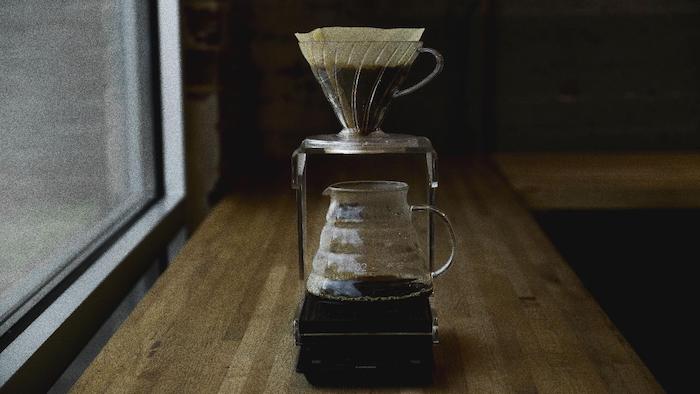
Also, I found that after a few years of use, the sides of the AeroPress had started to melt, which made me concerned about plastic contamination.
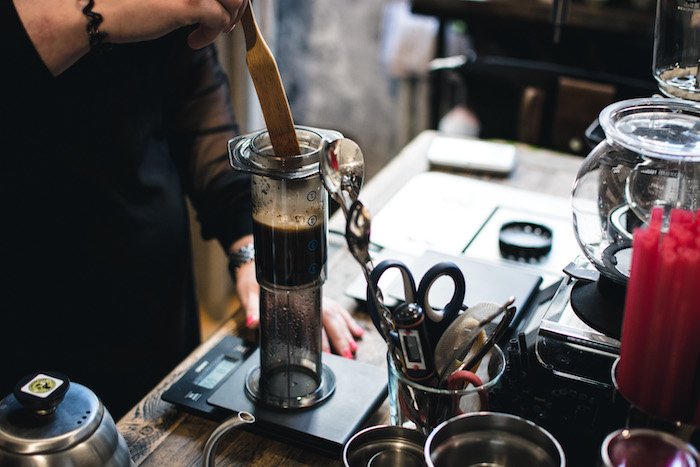
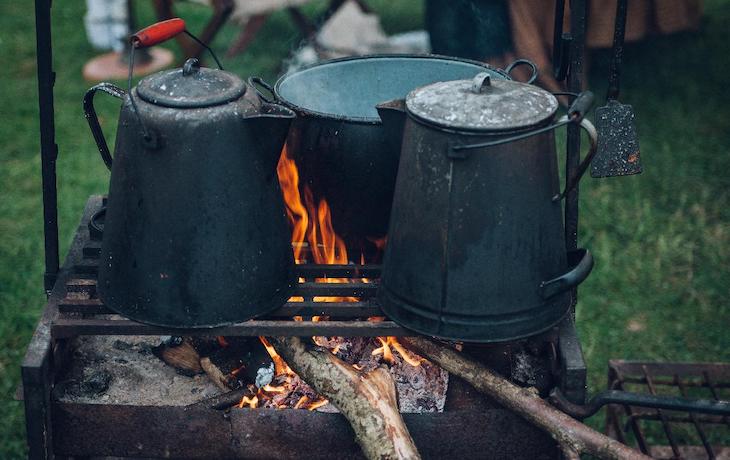
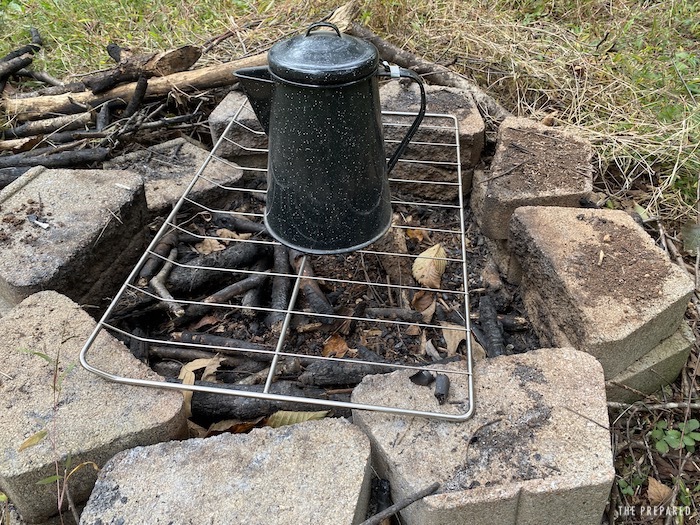
You are reporting the comment """ by on